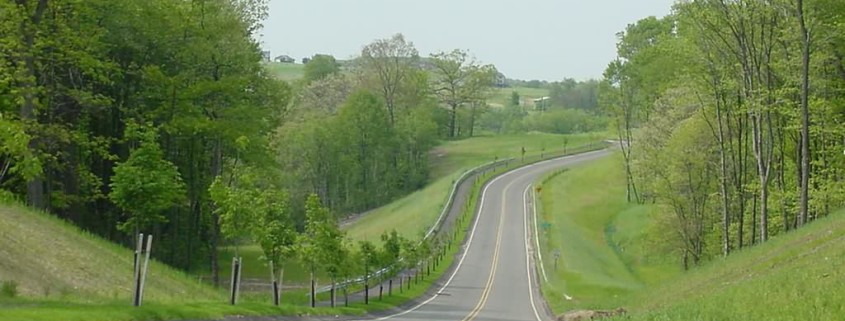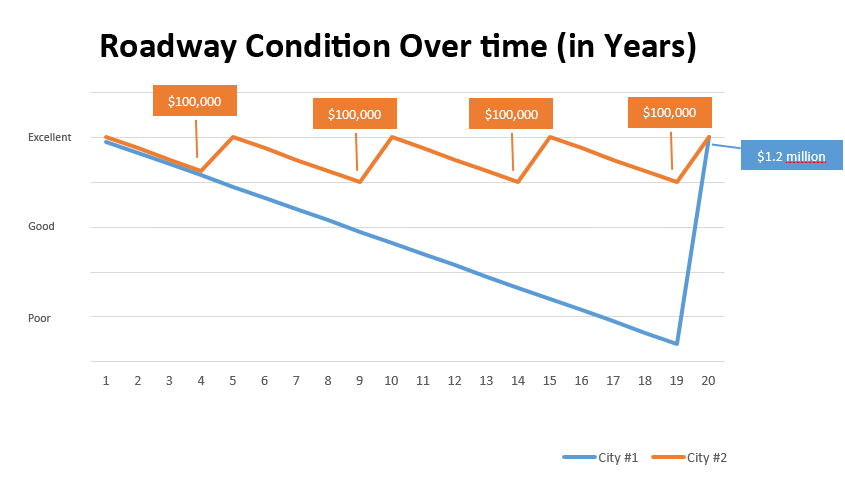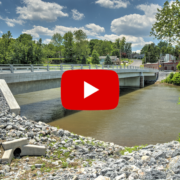Better Roads for Less Money with Asset Management

Municipal managers are under pressure every day to deliver more services in spite of shrinking budgets. With only so much money available, they must make tough choices about what investments to make in their community. Though they’ve heard the benefits of asset management many times in recent years, they still don’t feel they have the money to invest in such programs – not when that money could be spent on the construction or repair of badly needed roadways, bridges, and pipes.
Many communities see asset management programs as an additional expense, but the truth is: asset management saves you more money than it costs.
See also: Position Yourself for Funding With Asset Management & Capital Improvement Planning
Imagine a tale of two cities: both celebrating the ribbon-cutting on a brand new roadway and each taking a very different approach to caring for it.
City #1 has no asset management or capital improvement planning program. It does not assess the condition of its roadways and plan long-term investments in their upkeep. It makes repairs when the need becomes obvious.
City #1 will make moderate investments in maintenance over the next 20 years, but the condition of the roadway will steadily decline. Ten years after the ribbon-cutting celebration, the roadway condition will be fair at best. Fifteen years after, the residents who heralded its construction will be grumbling about its potholes and cracks. Twenty years after, the condition of the road will be so poor that City #1 will need to completely replace the roadway at a cost of $1.2 million per lane mile.
City #2, on the other hand, has a robust asset management and capital improvement planning program. It routinely inspects the condition of its roadways and takes proactive action to keep those roadways in top form. With investments every five years of approximately $100,000 to resurface the pavement, City #2 maintains its roadway in good condition throughout the next two decades, keeping traffic flowing smoothly, encouraging growth and development, and making residents and local businesses happy. The condition of the roadway never declines to a state where travelers complain.
Over the same 20-year-period, the residents of City #2 will ultimately have paid less money ($400,000) than City #1 ($1.2 million) but will have enjoyed better roadway conditions over the long-term.
Still think you can’t afford to invest in asset management and capital improvement planning? As these two cities show, you can’t afford not to.
For more information about how asset management and capital improvement planning can benefit your community, contact Brian Emberg, P.E., our Senior Vice President and Director of Transportation Services.









